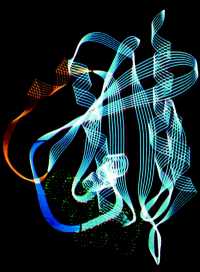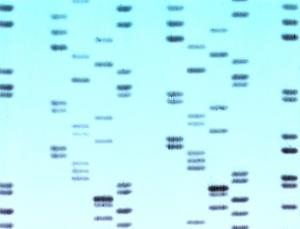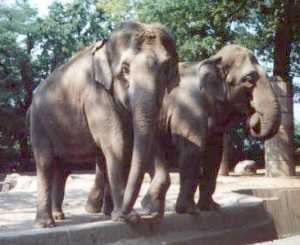We may never know why Alfred Nobel did not include mathematics when he decided which fields of research to recognise with prizes in his 1895 will. His reasons have been a subject of much debate, with theories ranging from the banal (he just didn't like maths that much) to the ludicrous (the enduring myth that he was upset because a mathematician stole his wife - he was never even married!). However, as it was his intention to honour inventions and discoveries that had direct practical benefit to mankind, the most likely explanation is that he felt the theoretical area of mathematics was unlikely to produce such beneficial discoveries.
If that was the case, then how wrong he was all those years ago! The choice of the 2002 Nobel laureates, announced in early October, shows the vital role mathematics plays in all the sciences, illustrated by the fact that the work of these researchers would not have been possible without mathematics.
Windows on the universe ...
Neutrinos, along with quarks, electrons and muons, are fundamental particles that are part of the Standard Model, a mathematical description of matter as we know it. They are formed when hydrogen is converted into helium in the fusion process that powers the Sun and other stars, and thousands of billions of them pass through us every second without us noticing. This is because neutrinos very rarely interact with matter, and so they have been notoriously difficult to detect at all.
However, Raymond Davis Jr (USA) and Masatoshi Koshiba (Japan) were not fazed by this and built neutrino detectors consisting of huge tanks of liquid placed in mines. Davis's tank was filled with 600 tonnes of ordinary cleaning fluid and he calculated that every month 20 neutrinos would react with the chlorine in the tank to produce argon atoms. So he needed to detect just 20 argon atoms amongst the 2x1030 chlorine atoms in the tank - harder than finding a particular grain of sand in the whole of the Sahara desert! Koshiba's tank in Japan was filled with water and surrounded by light detectors to capture the flashes produced by a neutrino reacting with a nucleus in the tank. This meant that not only could he capture neutrinos, but he could also record when they arrived and what direction they came from.
The odds might have seemed long, but Davis and Koshiba managed to capture neutrinos from both the sun and a distant supernova. Their work proved that fusion did power the stars and created a whole new area of research - neutrino astronomy.

Koshiba detected neutrinos from this supernovae, called 1987A, in a nearby galaxy.
Image from NASA
Riccardo Giacconi (USA), the other recipient of the physics prize, pioneered a different field of astrophysics, X-ray astronomy. All stars, including the Sun, emit electromagnetic radiation at different wavelengths - such as X-rays, visible light and microwaves. The waveforms of this radiation is governed by Maxwell's equations. In the 1960s, Giacconi built the first X-ray telescope, which had to operate in space since cosmic X-ray radiation is absorbed by the Earth's thick atmosphere.
| Radiation Type | Wavelength Range (m) |
|---|---|
| Gamma Rays | <10-11 |
| X-Rays | 10-11-10-9 |
| Ultraviolet | 10-9-10-7 |
| Visible | 10-7-10-6 |
| Infrared | 10-6-10-4 |
| Microwave | 10-4-10-1 |
| TV-FM | 10-1-101 |
| Radio | >10-9 |
By exploring phenomena occurring on the smallest scales, these researchers have opened new windows on the monumental scale of the universe.
... and windows on ourselves
Also opening new windows, this time on life here on earth, are the recipients of the Nobel Prize in Chemistry. Their work has enabled existing analytical methods to be extended to biological macromolecules, such as proteins and DNA - the building blocks of life.
John Fenn (USA) and Koichi Tanaka (Japan) were recognised for their work with mass spectrometry - a method in which particles from a sample are accelerated through an electromagnetic field, which causes them to separate according to equations involving their mass to charge ratio. This method can determine what molecules and how many of each a sample contains, but previously could only be used to identify fairly small molecules. In the late 1980s, Fenn and Tanaka developed methods for using mass spectrometry to identify biological macromolecules such as proteins. Their work has led to applications such as new methods for detecting cancer.

Picturing proteins. Image from U.S. Department of Energy Human Genome Program
The extension of mass spectrometry to biological macromolecules answers the "what?" and "how much?", but Kurt Wüthrich (Switzerland) was able to answer the question "what does it look like?" through his work on nuclear magnetic resonance (NMR). NMR had again only been useful for analysing small molecules - the peaks in the NMR spectrum give information on the three-dimensional structure of molecules. But for larger molecules the spectrum looks something like a grass lawn in section, and it is much harder to interpret the peaks. In the early 1980s Wüthrich developed a method for interpreting the NMR spectrum of biological macromolecules. This method enabled him to determine distances between the hydrogen nuclei in these large molecules, and using a mathematical technique based on distance-geometry he could calculate a three-dimensional picture of the molecule. This method has allowed chemists to study the proteins involved in dangerous diseases such as mad cow disease, as well as the structure and dynamics of DNA.
The early bird catches the worm
Meanwhile, others have been looking at worms to obtain new insights in to the processes of human life. This year's Nobel Prize in Medicine was awarded to three scientists for their work in genetics and molecular science - fields which use mathematics to model biological and cellular processes, and sophisticated statistical techniques for data analysis.
From the moment we are conceived, our cells continue both to divide to generate news cells, and to die off. A thousand billion new cells are created every day in a typical human adult, and in order to maintain the balance within our organs, an equal number must die through a controlled process called programmed cell death. Understanding this process has great biological and medical importance - cancer is characterized by a reduction in cell death, while in diseases such as AIDS, cells are lost through excessive cell death. However, studying these processes directly in any mammal, including humans, is too complicated, due to the huge numbers of cells we contain. Sydney Brenner (UK), John Sulston (UK) and Robert Horwitz (USA) have been recognised for their discoveries concerning programmed cell death in a much simpler organism, the nematode Caenorhabditis elegans.

Programmed for death. Image from DHD Photo Gallery
It was Brenner who first thought to study the nematode, C. elegans, a translucent worm approximately 1 mm long. Since the worm is see-through, its cellular processes could be studied directly under a microscope as it developed. In 1974 Brenner was able to demonstrate that different mutations could be linked to specific genes. Sulston continued Brenner's work by describing every cell
division in the nematode, from the fertilized egg to the 959 cells in the adult organism. He showed in 1976 that every nematode developed in exactly the same way, generating 1090 cells with precisely 131 of these being eliminated through programmed cell death. Horvitz, who initially majored in theoretical mathematics, continued their work by identifying the first two "death genes", showing that
there was a genetic program controlling cell death in the nematode.
New age economists
The "economic man" so beloved of traditional economists - coldheartedly rational, self-interested and immune to error - has been dethroned in recent years by a new breed of economists, heavily influenced by psychology and mathematical game theory. Daniel Kahneman, a psychologist at Princeton University, was honoured by the Nobel committee this year for his groundbreaking work on how people make decisions in the face of uncertainty and risk. The other winner, Vernon Smith of George Mason University in Virginia, was credited for his achievements in the laboratory, where he applied rigorous experimental techniques to the "dismal science".
Both researchers owe much to Game Theory, where risk and reward, peril and security, can be dealt with rigorously. In a field where ideology sometimes seems to matter more than the facts, their achievements in putting the facts centrestage were groundbreaking.
But wait, there's more!
Even the Nobel Peace prize is not exempt from mathematical influence. Former US president Jimmy Carter has been honoured for his work trying to find peaceful solutions to international conflict and his commitment to human rights, both during, and after his presidency. It is not well known, but Carter has a strong background in science. During his time in the navy, he was involved in the development of nuclear-powered submarines and taught physics and mathematics to their operators.

What is their surface area? Image from DHD Photo Gallery
Meanwhile, the humorous counterpart of the illustrious Nobel Prizes - the Ig Nobels - have also been awarded, and not surprisingly mathematics has reared its head there too. Arnd Leike (Germany) demonstrated that beer froth obeys the mathematical law of exponential decay and Karl Kruszelnicki (Australia) tested the statistical
significance of many factors involved in human bellybutton lint. Indian researchers estimated the total surface area of elephants, the executives and auditors of all the recently disgraced multinationals were recognised for "adapting the mathematical concept of imaginary numbers for use in the business world", and finally Chris McManus (UK) studied "scrotal asymmetry in man and in ancient
sculpture".
So we see that whether we are honouring the profound or the bizarre, the winner of all of these prizes is really mathematics.